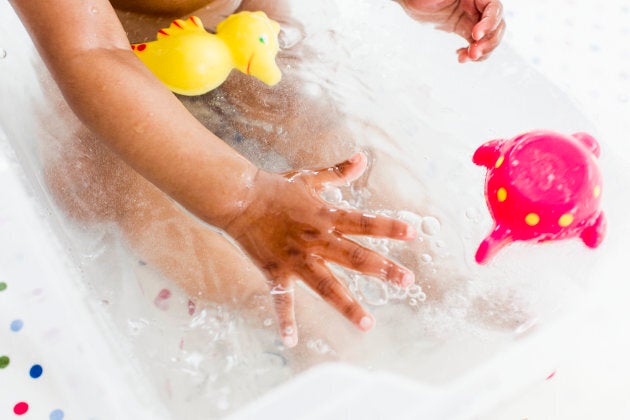For a lot of families, bath time is central to bedtime routine.
It's a soothing ritual, it's fun (bubbles! toys! splashing!), and it's a great way to scrub that day's grime off your children (berries! mud! how did they get dried snot in their hair?) before putting them in their pyjamas.
But now it turns out your kid's bath toys might be even dirtier than your kid.
New research published this week in the journal Biofilms and Microbiomes found "slimy biofilms" of bacteria inside each bath toy they examined after they had been used in water. And fungus was present in most of them.
"Environmental exposure to bacteria and fungi is not necessarily bad for human health and may indeed even strengthen the immune defence," the researchers noted in the study.
"Nevertheless, bath toys are typically used by children, who are potentially sensitive and vulnerable users. Squeezing water with chunks of biofilm into their faces (which is not unexpected behaviour for these users) may result in eye, ear, wound or even gastro-intestinal tract infections."
Researchers at the Swiss Federal Institute of Aquatic Science and Technology and the University of Illinois looked at a sample of 19 bath toys taken from five different households that had been used under real (bathing) conditions, plus a control group of six identical bath toys that they used in both clean and dirty bath water.
They then cleaned the outside of each toy with 70 per cent ethanol, and cut them in half. They found biofilms of bacteria in every single bath toy.
"The results were duck, duck, gross," Bruce Y. Lee, associate professor of international health at the Johns Hopkins Bloomberg School of Public Health, wrote in Forbes.
"While in many cases this biofilm was dark-coloured as a result of concurrent mould growth, a number of the biofilms were clear and transparent. There was lots of bacteria and fungi, as many as 75 million cells per square centimetre," Lee wrote.
Everything is disgusting
In 2017, parents were sent into a panic when Good Housekeeping published an article about the mould that could be lurking in popular teething toy Sophie the Giraffe.
And the year before, a woman posted a viral video of the mould she discovered hidden in her child's sippy cup, which led to a social media storm, which prompted a voluntary recall of certain Tommee Tippee Sippy Cups in the U.S. and Canada. Then Good Morning America analyzed the germs on over 50 used kids' bath toys and sippy cups, and found bacteria or mould in all of them.
They found fecal bacteria (poop, you guys! poop!) in 25 per cent of the sippy cups they tested, ABC reported.
It's not all bad

The good news is the researchers in this newest study emphasized that being exposed to bacteria and fungus isn't necessarily bad for your health (although they did note that children are more vulnerable).
And there are several ways to clean bath toys, including boiling them and making sure to squeeze all the water out after they're used, the researchers said. Martha Stewart recommends a monthly wash with 1/2 cup white vinegar per gallon of water, where you let the toys soak for 10 minutes, give them a scrub, squeeze and release the bath toys to suck the solution inside them, squeeze it all back out, and air dry.
"The easiest way to prevent children from being exposed to bath toy biofilms is to simply close the hole— but where is the fun in that?" the study's researchers said.